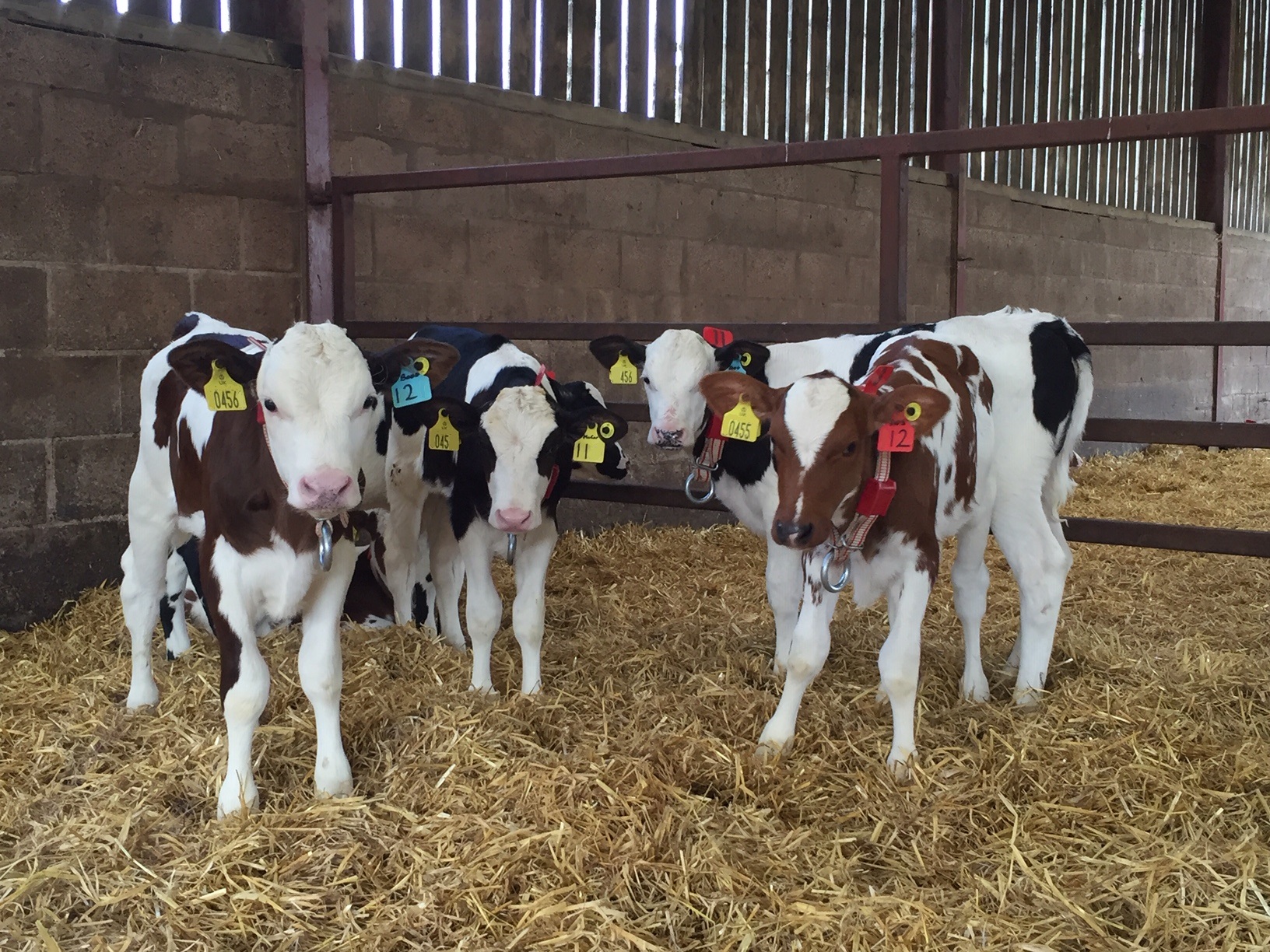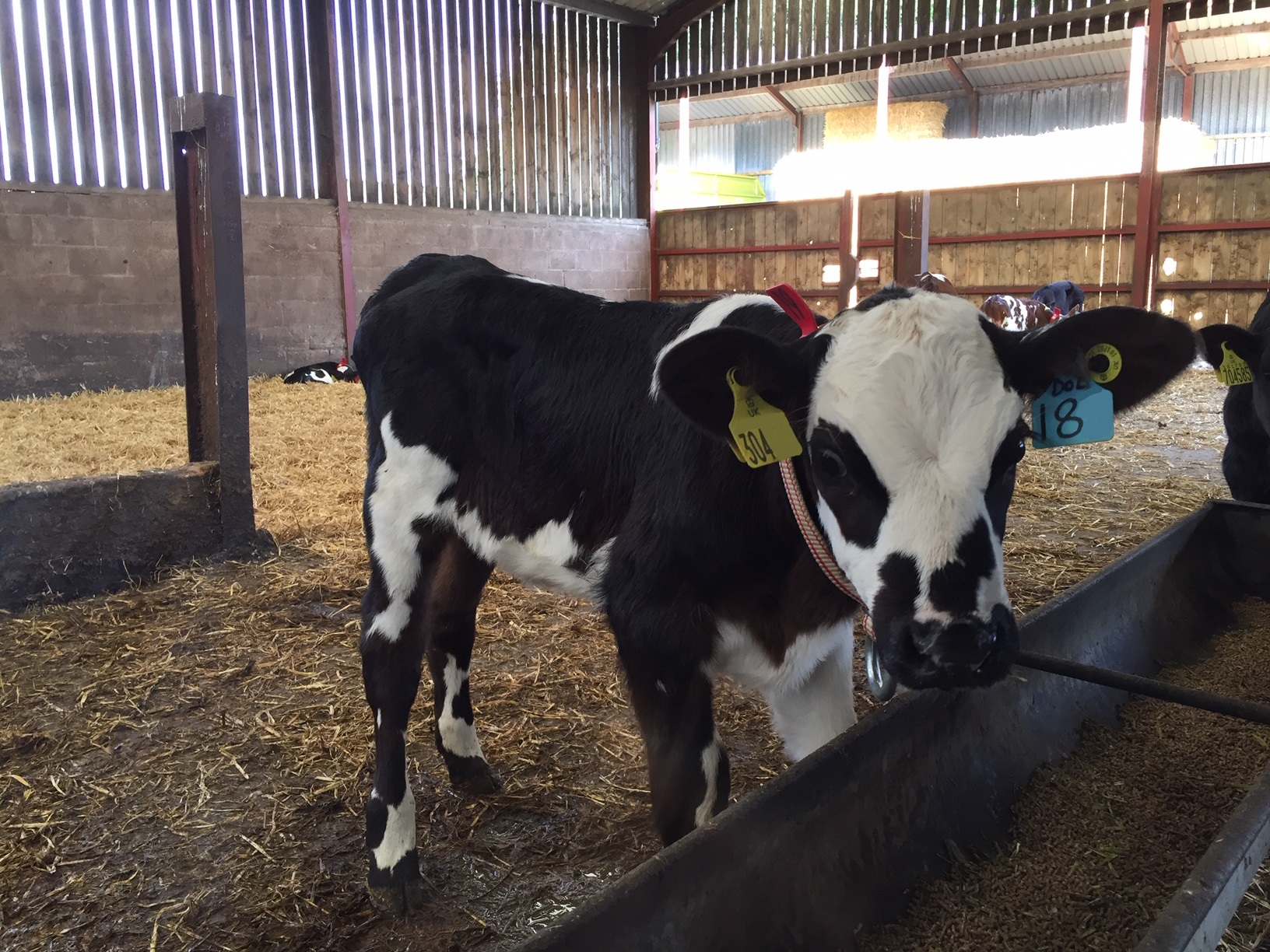Too much stress among youngstock will translate directly – and negatively – to the wellbeing of your calves and your business profits. Here are some practical calf stress management tips for calm, comfortable and profitable youngstock.
THE IMPACT OF STRESS ON YOUNGSTOCK
Calf stress is real, it’s essential that both dairy and beef farmers take it seriously. It’s crucial to keep youngstock healthy, happy and on target with growth rates – and for that, stress must be minimised. Particularly in the first 90 days of a calf’s life which will largely dictate future performance and profitability.
Stressful events trigger a cascade of hormonal changes that can lead to serious consequences such as reduced feed conversion, greater production of manure and an increase of pathogenic bacteria in manure. When the stress response becomes chronic – i.e. youngstock are routinely exposed to stress triggers – it can lead to a supressed immune system, vulnerability to disease and increased mortality risk. Stress can also reduce the effectiveness of vaccines and has even been linked to beef that is less tender and flavoursome.
Exposing calves to overly-stressful situations can also hamper well-intentioned husbandry efforts. Calves have good memories and can learn to associate certain events or environments with stress. For example, if medication was injected or tagging was administered while a calf was drinking from a trough or using an automatic feeder, they may be more resistant to those ‘events’ in the future.
So if stress is important to manage, how can you identify calves that are suffering from it?
HOW TO IDENTIFY STRESS IN YOUNGSTOCK
It’s a great skill to be able to identify stress among your calves. But, the signs can often be subtle. Watch out for behavioural change, reduced feed intake and elevated heart rate and breathing rate. According to Dairy Herd, a calf's normal heart rate is 100 to 140 beats per minute. To effectively monitor an elevated heart rate, use a stethoscope and listen over the left-hand side of the cow's chest behind the cow's elbow.
Stressed calves often lack vigour and may stand with their head down and ears lowered. Or they may be excessively fatigued or display signs of fear.
Learning to pick up on the cues will help you to identify the potential causes and take action before stress becomes chronic and your calves experience negative consequences.
WHAT TRIGGERS STRESS IN CALVES?
Calves are susceptible to stress and resistant to change. While many of the factors that cause stress are unavoidable, it’s important to be aware of typical stress triggers so you can mitigate their impact. The list includes excessive cold, excessive heat, transportation, overcrowded housing, tagging, handling, vaccinations, feed competition and weighing.
In this article we will focus on tackling three of the largest calf stress triggers: housing, weaning and dehorning.

HOUSING AND CALF STRESS
How can calf housing act as a stressor?
Calves are incredibly sensitive to sub-optimal environmental conditions. Therefore, if your calf housing is too cold, too hot, too humid or too draughty, there’s the potential for stress. So too is uncomfortable and/or unclean bedding. A lack of space and overcrowding is another trigger. The space required for calves will vary depending on their size, but according to Teagasc, the minimum permissible pen floor area per calf is 1.5m2, when it comes to space, bigger is always better.
How to prevent calf stress in housing
Always keep two words in mind when it comes to housing your youngstock: comfort and consistency. Calves don’t tolerate change well, this includes housing, but the most important thing is that your calves are comfortable.
Optimum calf conditions require temperatures of 10-20ºC – with humidity at 65-75%. Calf jackets can help to keep youngstock warm and dry when temperatures fall below 10°C.
Appropriate ventilation is important too. Aim to locate your calf housing upwind of other cattle housing facilities, at right angles to the prevailing wind direction. Ventilation is all about encouraging fresh air to circulate (thus helping to remove pathogens) in your housing, but it’s important to mitigate against draughts. That’s why some farmers use bales of straw or hay to act as makeshift windbreaks along open sides of a calf shed.
Overcrowded housing is another calf stress trigger. In general terms there should be 1.1m² of space for calves aged four weeks, increasing to 1.8m² for 12-week-old calves. Aim to keep the age range of your groups as close as possible – around seven days is perfect but try to make sure all calves in the group are born within 21 days of each other.
Of course, comfortable and hygienic bedding is crucial too. It’s recommended that straw bedding is at least 15cm deep and remains dry at all times. Wood shavings and bark chips can also be used to provide your calves with dry lying conditions. One of the best ways for a quick indication on comfort and hygiene is the “kneeling test”, in short get on your knees in the calf shed and if your knees get damp, so will your calves.
Finally, while it’s vital to check your calves regularly, it’s also important to keep noise and disruption to a minimum. Calves like a peaceful environment. Which is why some farmers are adopting a remote surveillance strategy and keeping tabs on their youngstock with CCTV cameras.
>> Calf housing: changes for health, happiness and productivity
WEANING AND CALF STRESS
How does weaning act as a stressor?
Stress at weaning can cause a calf to take a backwards step in growth. Pronounced stress is far more likely when weaning is too abrupt. Sudden weaning leaves little or no time for a calf’s digestive system to adapt to a fodder and silage-based diet. Poor dry matter intake further inhibits growth, stifles immune function and can leave calves more susceptible to disease.
How to prevent calf stress from weaning
Weaning should be a smooth and gradual process. It’s good practice to begin offering chopped straw and creep-fed cereal to youngstock while they are milk-fed to give the rumen ample opportunity to adapt. A more considered approach to weaning such as this can lead to increased weaning weight, reduced growth check at weaning and more efficient feed conversion. Around six to ten weeks before weaning is a good time to begin introducing creep feed to your youngstock’s nutrition.
Finally, remember that a good quality milk replacer can go a long way to supporting growth performance while calves adjust to a new diet and a new environment. Select a calf milk replacer with high digestibility that suits your individual feeding system, calf type and growth goals. Computerised calf feeding systems can ensure each calf’s specific nutritional needs are met to keep them in line with growth targets.
>> Stress-free calf rearing
Because weaning is implicitly stressful, avoid other stressful events such as dehorning and castration for one month before and after weaning.

DEHORNING AND CALF STRESS
How does dehorning act as a calf stressor?
Dehorning is an important procedure for the safety of the calf, the safety of the herd and the safety of farm staff. To avoid stress, it’s absolutely vital to perform this procedure correctly and efficiency for minimal disruption to the calf.
Indications that a calf is overly-stressed - or perhaps more concerning in pain - from dehorning include tail shaking, head shaking, backwards walking and rapid alternate raising of two or more legs (sometimes called ‘treading’) [1] If stress symptoms last longer than six to eight hours after the procedure then the calf may require attention.
How to prevent calf stress from dehorning
When performing a dehorning procedure, official guidelines state that anaesthetic should be applied and ample time given for the area to numb. You can test this by pricking the skin in the area around the base of the horn to see if the animal reacts. Administer pain relief after the procedure and protect the wound from contamination from items such as grass seeds, hay or silage until the area has scabbed over. It’s also best to perform dehorning in spring or autumn to avoid complications caused by flies or frosts.
TACKLING STRESS WITH ENRICHMENT
Just like humans, animals like to play too. And calves are no different. It’s why many beef, dairy and other livestock farmers are embracing the idea of enrichment activities to alleviate boredom, tackle stress and keep animals happy and healthy. Brushes are becoming a staple on many beef and dairy farms. Other ideas include swinging punch bags, tractor tyres and padded posts.. Keeping calves mentally stimulated by their environment is a great way to beat stress.
HAPPY FARMER, HAPPY FARM
Yes, it’s a cliché. But it’s true. Remember that the stress levels of your calves aren’t the only ones that matter on your farm. It’s so important to look after your own mental health too, giving yourself regular breaks, opportunities for downtime and remembering to reflect on your aims and ambitions – both for your farming business and beyond it.
A little bit of stress can be a good thing.
Too much will damage your business as well as your health.
Look after yourself.
OVER TO YOU…
Stress management cannot be overlooked if you want to run a productive and profitable dairy or beef farming business. Calves are susceptible to stress and the ramifications include everything from reduced growth to disease susceptibility. But when you take steps to manage stress by keeping your youngstock calm and comfortable, you can boost the productivity of your herd as well as your profits.
What methods do you use to reduce stress in your youngstock? Share your ideas with our farming communities on Twitter and Facebook. (Or pinch some tips for yourself.)
[1] Kupczyński, Robert & Budny, Anna & Śpitalniak, Kinga & Tracz, Ewa. (2014). Dehorning of Calves – Methods of Pain and Stress Alleviation – A Review. Annals of Animal Science. 14. 10.2478/aoas-2014-0016.
Published on: 17 September 2020
View all articles